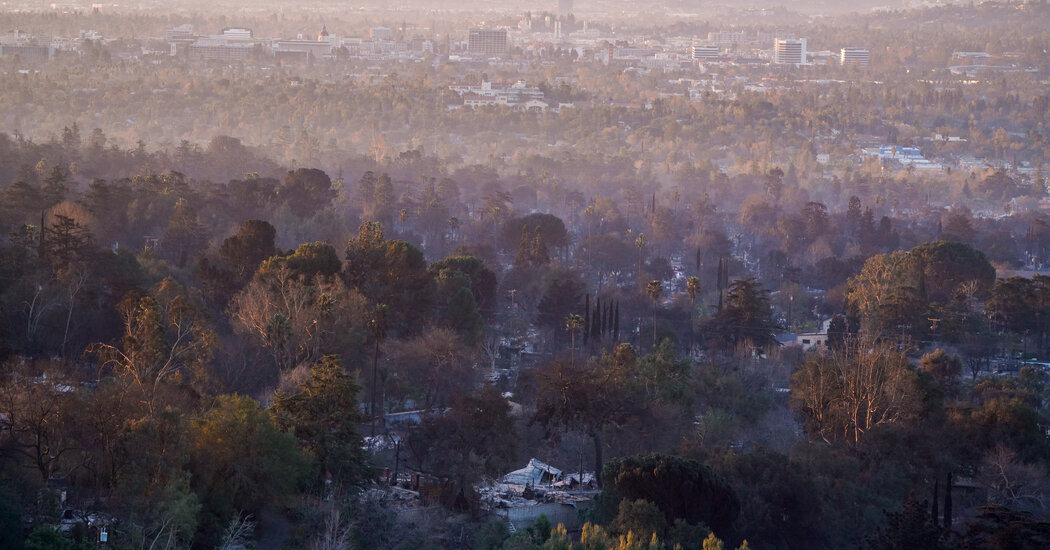Armed with two garden hoses hooked up to a sputtering tap, Matthew Craig battled fire and smoke to save his house from the onslaught of flames that devastated much of Altadena, a once leafy corner of Los Angeles County. The wind felt like dragon’s breath, he said, and “we were all eating smoke.”
But even though his home is secure, for now, it will be a long time before he and his family feel safe enough to go back. Every room in the house, he said, was covered in ash, dust, soot and dirt that the high winds had blown inside. “My 5-year-old son, wife, dog and I don’t want to be living in a toxic wasteland.”
As residents start returning to neighborhoods ravaged by fire, they are contending with a slew of toxic hazards in the lingering smoke and ash that experts say can cause breathing problems and worse.
When neighborhoods go up in smoke, they burn all manner of human-made materials — vehicles, lead pipes, paint, plastics — which can release toxic smoke and fumes that can linger. A recent study found that even for homes that are spared destruction, smoke and ash swept inside could adhere to rugs, sofas and drywall, creating health hazards that can remain for months.
“There are so many people who have lost their homes in this, and that is devastating,” said Colleen Reid, who studies the health effects of air pollution at the University of Colorado Boulder, and who led the research. “But even the people who feel lucky that their home is fine — they could actually be exposed to lot of toxic materials,” she said. “The wind will get through every crack.”
